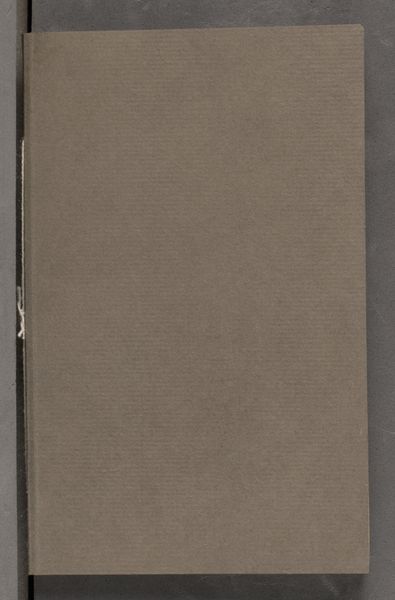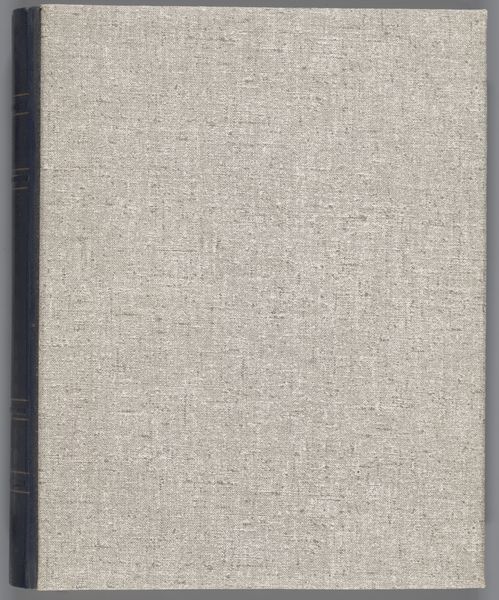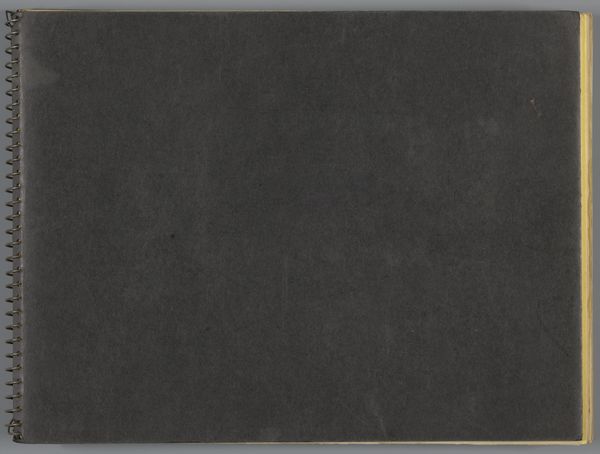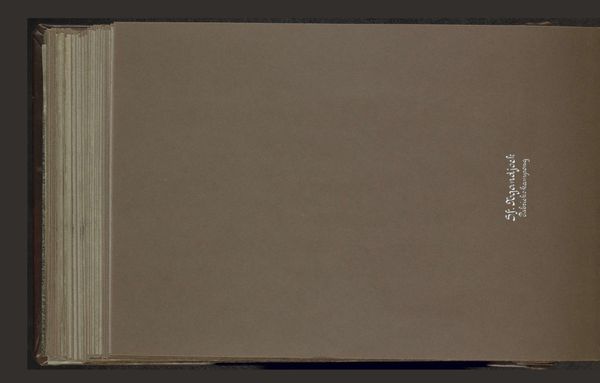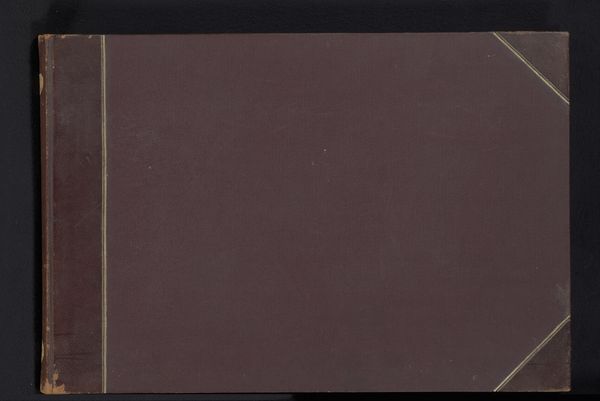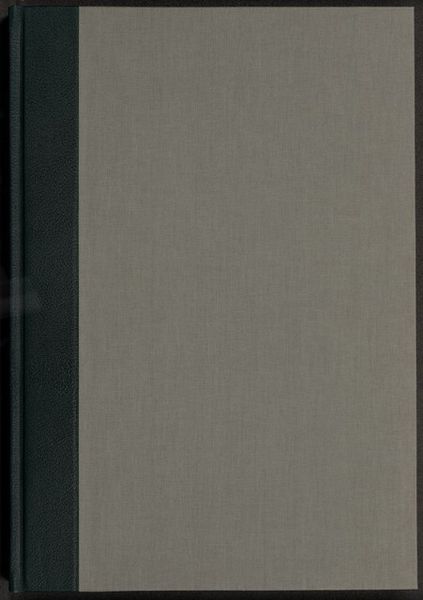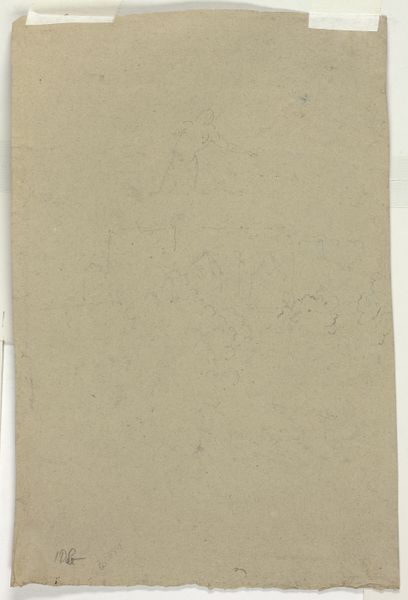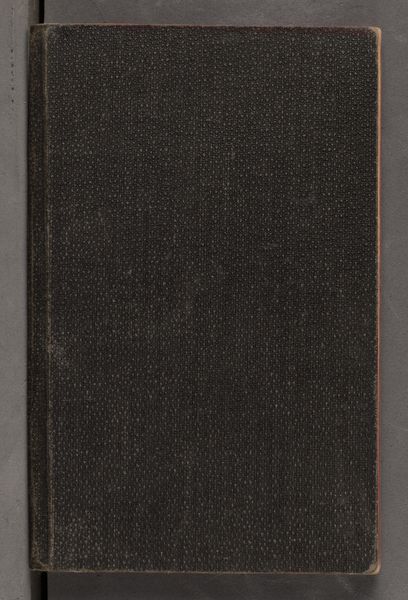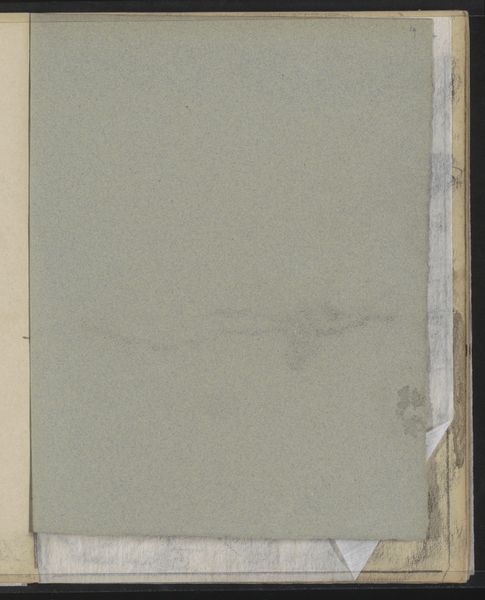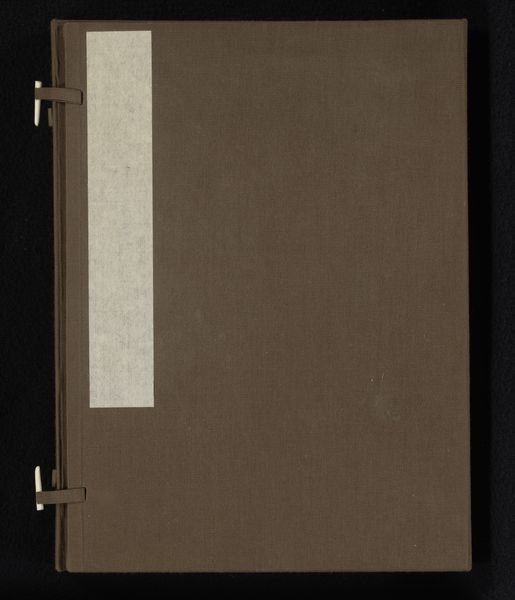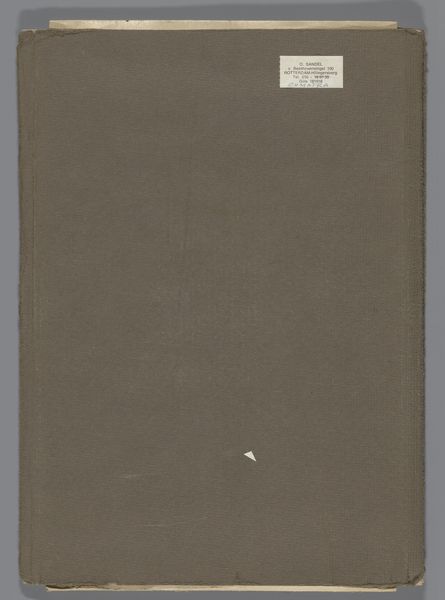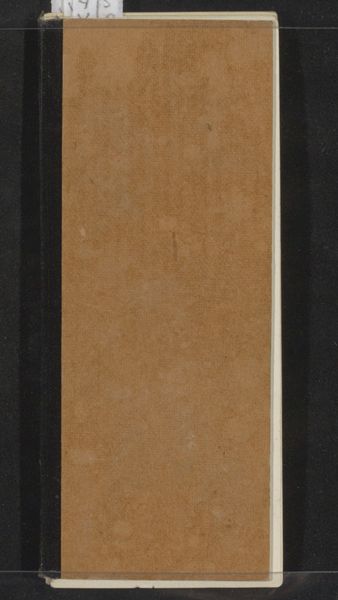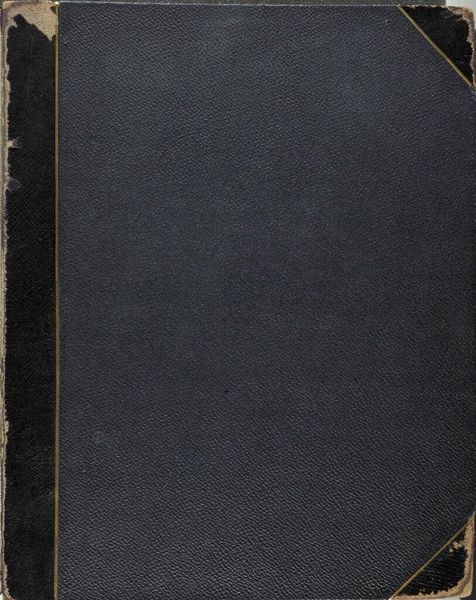
drawing, paper
#
drawing
#
16_19th-century
#
paper
Copyright: Public Domain
Curator: Today we're looking at a work by Friedrich Metz entitled "Skizzenbuch", likely from 1872. It is held at the Städel Museum and presented simply as a drawing on paper. What strikes you about it initially? Editor: It feels quite somber, almost meditative. The color and texture of the paper give it a sort of worn dignity. Is it meant to be viewed just as a material artifact, or are there sketches inside we're not seeing? Curator: That's the central tension, isn't it? Its value comes precisely from its materiality, but also, maybe, in its potential as a working-class tool for labor and planning; the "means of production", if you will. It challenges that traditional separation between art and "artifact," doesn't it? This plain drawing underscores the labor involved in the creation of sketches. The paper, its thickness, the way it absorbs the drawing medium, the binding method… all these are aspects of the whole artwork. Editor: I agree, it's also interesting to situate this "Skizzenbuch" in the broader context of 19th-century art education and production. The act of sketching was crucial for social mobility; for some a way to express creativity, and a pathway towards an education, which, obviously, was hugely impacted by the artist's identity and social class. Curator: Exactly. And it speaks to the industrial context. Consider the sourcing of the paper, perhaps from mechanized paper mills; then the role of laborers in the sketchbook's creation and distribution. Those materials, and the means by which it came together, carry economic and social information we can uncover. Editor: Furthermore, sketchbooks often contain deeply personal content – notes, preliminary studies for other works, spontaneous drawings from real life or perhaps fantasies. To me it signifies an intimacy that's hard to access without flipping through those pages, so I wonder what that might conceal, in the cultural milieu in which it was made. I think it embodies that separation, between inner and outer life. Curator: So it becomes a prompt for questions, an object leading to so much more: how the availability and means of the artist and laborer, affect a production! Editor: And from the sketchbook as a place to put ideas to the identity and cultural sphere of the person utilizing them – powerful to consider all these forces intersecting through this very humble thing.
Comments
No comments
Be the first to comment and join the conversation on the ultimate creative platform.
